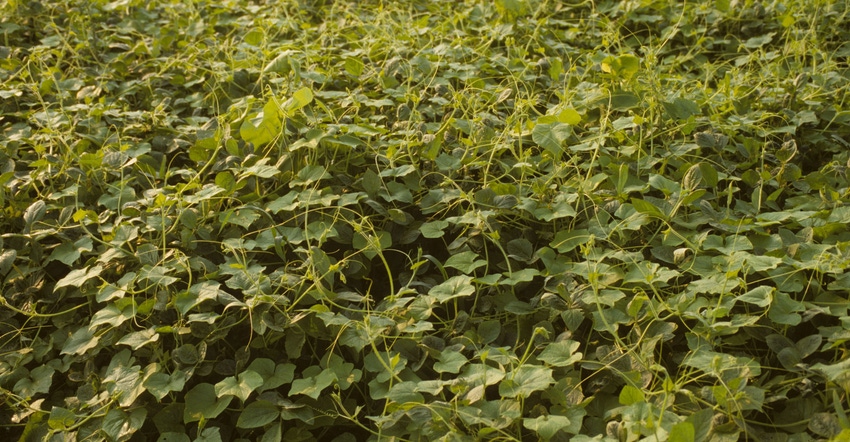September 9, 2020

In some parts of Pennsylvania and other Northeast states it’s been rather wet this season. Under these moist conditions, burcucumber can germinate and emerge late into the season.
Penn State research shows that ensiling green burcucumber seed is an effective way to kill viable seed, but that ensiling does not affect mature seed. An eight-week ensiling period on burcucumber seed revealed that if the burcucumber seeds were immature (green or cream-tan colored) only 2% remained viable, as compared to mature seed (dark brown seed coats) that were still 87% viable.
This suggests that early harvesting of corn as silage may prevent viable seed production in burcucumber-infested fields. Silage harvest also prevents mature seed from re-entering the field through the combine.
Applying an herbicide won’t necessarily control the weed before grain harvest. In most cases, if the corn is harvested for grain, the mature seeds will simply end up back in the field, or in the grain, making the problem worse for future years.
Still, there are some things you can try if you need to harvest corn for grain and you have burcucumber in the fields. Gramoxone, or paraquat, is probably the most effective preharvest herbicide.
Here are some other late-season herbicide options:
Aim 2EC. Can be applied three days before harvest at 2 fluid ounces an acre. Use as a harvest aid to desiccate certain broadleaf weeds. Apply in 10 gallons an acre of water. Include necessary adjuvants and make sure spray coverage is sufficient; otherwise, poor control will result.
Basagran. No restrictions
Defol 5L. This can be applied to desiccate problem weeds in early maturing corn. Apply 4.8 quarts an acre at least 14 days before harvest in 10 to 20 gallons an acre of water and include appropriate adjuvants. Do not graze treated fields or feed fodder or forage until 14 days after application.
Impact or Armezon. Can be applied up to 45 days prior to harvest.
Glyphosate. Up to 0.75 pounds acid equivalent per acre (32 fluid ounces of a 3-pound acid equivalent per gallon formulation) to corn a week or more prior to harvest. Include necessary adjuvants to improve performance. Must be applied to grain when moisture is 35% or less and after maximum kernel fill.
Gramoxone 2SL. Apply 1.2 to 2 pints per acre after black layer and at least seven days before harvest. The higher rate can be used to desiccate mature broadleaves and grasses over 18 inches tall. Be sure to include a nonionic surfactant.
2,4–D LV4. Apply 1 to 2 pints per acre after the hard dough or dent stage. Use higher rates on larger weeds and those under stress. Do not forage or feed corn fodder for seven days after application.
Keep in mind that this type of application at this time of year requires high-clearance equipment or aerial application, so hopefully these fields are the exception and not the norm.
Herbicide applications made during this late timeframe are used primarily to help desiccate green weed tissue to improve the harvesting process. Contact herbicides are usually better at this process, but this can vary by weed species and usually will require at least a week or more to desiccate weeds. Some of these herbicides are not that effective on large weeds or certain species.
Lingenfelter is an Extension associate of weed science at the Penn State Cooperative Extension.
Source: Penn State Cooperative Extension, which is solely responsible for the information provided and is wholly owned by the source. Informa Business Media and all its subsidiaries are not responsible for any of the content contained in this information asset.
Read more about:
Corn SilageYou May Also Like




